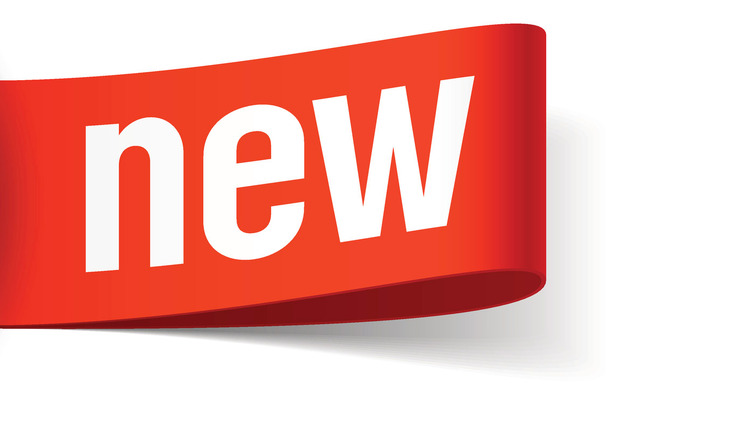There are ways that every organization can reduce their costs for mailing equipment and it may come in some in areas that you might not expect. Based on visibility to your needs, options, invoices, locations and closures, you could be saving thousands and recovering lost funds. We manage these spends for some of the largest companies in the US and are reducing costs by over 60%, plus saving millions in fees, overcharges and lost postage. Here are our top 5 clues to look for and strategies you can implement on your own for your organization.
1. The equipment spend is not aligned with the postage use. It is amazing how often we see sites spending more on the equipment than the postage being used. Or sites paying for meters that have not been filled in years. We have a term we use called Spend Ratio which is Equipment Cost/Postage use. Here are some goals to try to stick within:
a. Spending less than $500 per month in postage - Spend Ratio less than .5 - Example: If you are metering $200 in postage, your equipment should cost less than $100. The lower the better.
b. Spending over $500 per month in postage - Spend Ratio less than .25 - Example: If your site spends $1,000 per month in postage, you should be spending less than $250 on equipment. If you do production volumes of over $5,000 per month, it should be less than .1.
These are just guidelines and the lower you are on these ratios the better.
2. The sales/lease agreement is difficult to understand. You are at a disadvantage when acquiring new equipment because the vendor does this every day where you may only think about this every 4 years when the lease is up. It is very important to know exactly what is on this agreement to make sure you are paying the right amount for the services you need. Here are the main areas to focus:
a. What services are covered - Make sure meter rental, meter resets, postage advances, maintenance, and scale rate changes are covered with the costs. If they are chargeable, get the costs documented and find out how often they increase.
b. What equipment is covered - Typically they will give you a grocery list of items that are covered on the agreement. You need to go through each line to validate that the item needed and it is at the right level. Since the price is typically not broken out by item, you may not know if it is chargeable. Here are some items to check for:
i. Machine Speed - Some mid to higher end models have different price points based on the speed of the unit. Make sure you are only paying for the speed you need.
ii. Scale Capacity and Features - As scales handle heavier weights, the pricing goes up. Make sure you are only buying the scale sizes needed for your application. Also, there are features for scales that add to the costs like differential/off-weight weighing that should be justified.
iii. Accounting Options - If you are tracking postage by departments make sure to only buy the number of accounts needed and with the simplest access methods.
iv. E Services - The vendors may list features to be able to submit Certified, and USPS traceable items through the internet to track online. This can be a great option, but get the cost broken out to validate costs.
v. Professional Services - We have seen contracts where the vendor has added programming time for simple mailing machine installations. If there is any training, development or installation added to the agreement, validate the costs and if it is needed.
vi. Additional Hardware - If you see shredders, letter openers, folders, printers etc. validate the costs and need.
c. Evergreen Clause - This is language in the terms and conditions that states at the end of the lease, if you do not let the vendor know what you want to do with the equipment 90 days prior, you will be automatically renewed for another 12 months. I recommend trying to get this verbiage changed or put this future date on your calendar to make sure you contact the vendor in the right amount of time.
3. The following items appear on your invoices. Mailing invoices can be difficult to understand because you are paying for multiple items. You may be invoiced different amounts for leases, maintenance, rate changes, or postage that could be paid up front or after the fact. Here are items to watch out for that can be avoided or eliminated.
a. Late Fees and Finance Charges - This is the most common complaint on mailing invoices is that these fees arise. They happen because invoices are not paid by the due date and disputed charges linger. To make matters more confusing, if postage invoices are not paid in full, you may be charged a finance fee of over 15% plus a late fee. My recommendation is always to pay the full invoice amount and dispute it after to get a credit on the next invoice. It will stop these fees from accumulating.
b. Vendor Equipment Insurance - All leases require that you provide proof of insurance but most entities either forget or never read the terms and conditions. The vendor then assigns its own insurance which is charged on every lease invoice. This is simple to eliminate by sending in proof of insurance to the vendor.
c. Enhanced Loyalty Programs - Some mailing vendors have loyalty plans that give points for postage used and supply spends. These can be very good programs where you can accumulate invoice credits or other personal items. If you are getting charged fees for an enhanced plan, we recommend that you cancel it because the standard plans are typically fine.
d. Maintenance, meter rental or rate change invoices - Make sure that these are not supposed to be included on your lease. Also, that is it for equipment that is actively being used.
4. Your company has closed/merged offices or has gotten rid of meters. When meters get returned, most entities forget that there is postage sitting in the device or in the corresponding postage account. We have found millions for clients from closed and returned postage meters. Make sure that when meters get returned, that you are going back and requesting the postage that was in the meter and in the account.
5. Your company has more than 20 meters - There is not a company in the US that has multiple meters across their enterprise that cannot save money. We work with some of the largest, with formal vendor relationships, and we are still saving the percentages discussed above. Here are the clues to look for and what you can do to reduce your costs.
a. Do you have visibility to all equipment, postage spend and invoice detail across the sites? Most do not and this is the biggest factor in saving money. Work with your mailing vendors to provide this detail.
b. Are you paying different rates for the same model meter throughout your enterprise? We find many large companies are paying 2-4 times more for the same model at different locations. This can be avoided by setting up contracts around fixed price points.
c. Are you using multiple vendors? It is always a best practice to form a national agreement with a single vendor to make sure you have better control on rates and reporting.
d. If you have a national contract in place, are the bills being reviewed to validate discounts? We typically will find many meter rentals, maintenance and supply invoices not getting their corporate discounts. This happens because of the disconnect between the group setting up the agreements and those approving or paying invoices.
e. Is every machine properly utilized? We will typically find 5-15% of a company's fleet is not in use, sitting in storage or lost. The cost for this equipment can be expensive and it can go on for years. This can be eliminated by maintaining proper inventories, monitoring postage usage and checking in with equipment operators.
Conclusion If you break down all of the clues and remedies it creates a simple formula:
Visibility + Knowledge = Control and Savings.
If you create visibility to your current spends and needs, and know the right questions to ask and what to look for, you can control your costs and maximize your savings. I hope this article will give you the tools to be better control these spends and will help reduce your costs for the future.
Adam Lewenberg, CMDSS, MDC, President of Postal Advocate Inc., runs the largest Mail Audit and Recover firm in the United States. Their mission is to help entities with large numbers of locations reduce mail related expenses, recover lost postage funds, and simplify visibility and oversight. Over the last year, they have helped their clients save an average of 63% and over $3 million on equipment, fees and lost postage. He can be reached at (617)372-6853 or adam.lewenberg@postaladvocate.com.
1. The equipment spend is not aligned with the postage use. It is amazing how often we see sites spending more on the equipment than the postage being used. Or sites paying for meters that have not been filled in years. We have a term we use called Spend Ratio which is Equipment Cost/Postage use. Here are some goals to try to stick within:
a. Spending less than $500 per month in postage - Spend Ratio less than .5 - Example: If you are metering $200 in postage, your equipment should cost less than $100. The lower the better.
b. Spending over $500 per month in postage - Spend Ratio less than .25 - Example: If your site spends $1,000 per month in postage, you should be spending less than $250 on equipment. If you do production volumes of over $5,000 per month, it should be less than .1.
These are just guidelines and the lower you are on these ratios the better.
2. The sales/lease agreement is difficult to understand. You are at a disadvantage when acquiring new equipment because the vendor does this every day where you may only think about this every 4 years when the lease is up. It is very important to know exactly what is on this agreement to make sure you are paying the right amount for the services you need. Here are the main areas to focus:
a. What services are covered - Make sure meter rental, meter resets, postage advances, maintenance, and scale rate changes are covered with the costs. If they are chargeable, get the costs documented and find out how often they increase.
b. What equipment is covered - Typically they will give you a grocery list of items that are covered on the agreement. You need to go through each line to validate that the item needed and it is at the right level. Since the price is typically not broken out by item, you may not know if it is chargeable. Here are some items to check for:
i. Machine Speed - Some mid to higher end models have different price points based on the speed of the unit. Make sure you are only paying for the speed you need.
ii. Scale Capacity and Features - As scales handle heavier weights, the pricing goes up. Make sure you are only buying the scale sizes needed for your application. Also, there are features for scales that add to the costs like differential/off-weight weighing that should be justified.
iii. Accounting Options - If you are tracking postage by departments make sure to only buy the number of accounts needed and with the simplest access methods.
iv. E Services - The vendors may list features to be able to submit Certified, and USPS traceable items through the internet to track online. This can be a great option, but get the cost broken out to validate costs.
v. Professional Services - We have seen contracts where the vendor has added programming time for simple mailing machine installations. If there is any training, development or installation added to the agreement, validate the costs and if it is needed.
vi. Additional Hardware - If you see shredders, letter openers, folders, printers etc. validate the costs and need.
c. Evergreen Clause - This is language in the terms and conditions that states at the end of the lease, if you do not let the vendor know what you want to do with the equipment 90 days prior, you will be automatically renewed for another 12 months. I recommend trying to get this verbiage changed or put this future date on your calendar to make sure you contact the vendor in the right amount of time.
3. The following items appear on your invoices. Mailing invoices can be difficult to understand because you are paying for multiple items. You may be invoiced different amounts for leases, maintenance, rate changes, or postage that could be paid up front or after the fact. Here are items to watch out for that can be avoided or eliminated.
a. Late Fees and Finance Charges - This is the most common complaint on mailing invoices is that these fees arise. They happen because invoices are not paid by the due date and disputed charges linger. To make matters more confusing, if postage invoices are not paid in full, you may be charged a finance fee of over 15% plus a late fee. My recommendation is always to pay the full invoice amount and dispute it after to get a credit on the next invoice. It will stop these fees from accumulating.
b. Vendor Equipment Insurance - All leases require that you provide proof of insurance but most entities either forget or never read the terms and conditions. The vendor then assigns its own insurance which is charged on every lease invoice. This is simple to eliminate by sending in proof of insurance to the vendor.
c. Enhanced Loyalty Programs - Some mailing vendors have loyalty plans that give points for postage used and supply spends. These can be very good programs where you can accumulate invoice credits or other personal items. If you are getting charged fees for an enhanced plan, we recommend that you cancel it because the standard plans are typically fine.
d. Maintenance, meter rental or rate change invoices - Make sure that these are not supposed to be included on your lease. Also, that is it for equipment that is actively being used.
4. Your company has closed/merged offices or has gotten rid of meters. When meters get returned, most entities forget that there is postage sitting in the device or in the corresponding postage account. We have found millions for clients from closed and returned postage meters. Make sure that when meters get returned, that you are going back and requesting the postage that was in the meter and in the account.
5. Your company has more than 20 meters - There is not a company in the US that has multiple meters across their enterprise that cannot save money. We work with some of the largest, with formal vendor relationships, and we are still saving the percentages discussed above. Here are the clues to look for and what you can do to reduce your costs.
a. Do you have visibility to all equipment, postage spend and invoice detail across the sites? Most do not and this is the biggest factor in saving money. Work with your mailing vendors to provide this detail.
b. Are you paying different rates for the same model meter throughout your enterprise? We find many large companies are paying 2-4 times more for the same model at different locations. This can be avoided by setting up contracts around fixed price points.
c. Are you using multiple vendors? It is always a best practice to form a national agreement with a single vendor to make sure you have better control on rates and reporting.
d. If you have a national contract in place, are the bills being reviewed to validate discounts? We typically will find many meter rentals, maintenance and supply invoices not getting their corporate discounts. This happens because of the disconnect between the group setting up the agreements and those approving or paying invoices.
e. Is every machine properly utilized? We will typically find 5-15% of a company's fleet is not in use, sitting in storage or lost. The cost for this equipment can be expensive and it can go on for years. This can be eliminated by maintaining proper inventories, monitoring postage usage and checking in with equipment operators.
Conclusion
Visibility + Knowledge = Control and Savings.
If you create visibility to your current spends and needs, and know the right questions to ask and what to look for, you can control your costs and maximize your savings. I hope this article will give you the tools to be better control these spends and will help reduce your costs for the future.
Adam Lewenberg, CMDSS, MDC, President of Postal Advocate Inc., runs the largest Mail Audit and Recover firm in the United States. Their mission is to help entities with large numbers of locations reduce mail related expenses, recover lost postage funds, and simplify visibility and oversight. Over the last year, they have helped their clients save an average of 63% and over $3 million on equipment, fees and lost postage. He can be reached at (617)372-6853 or adam.lewenberg@postaladvocate.com.
















